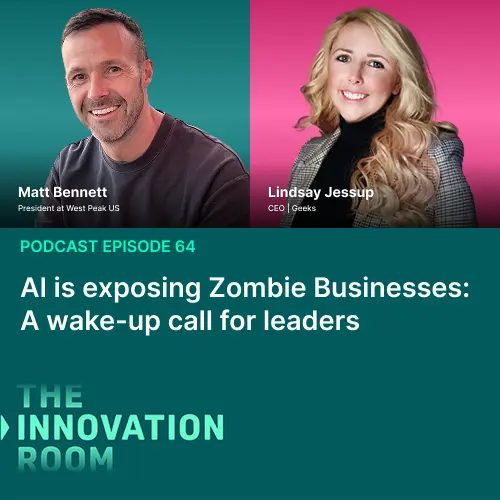
AI evolution vs Digital transformation: Why data strategy must come first
In today’s boardrooms, the terms digital transformation and AI evolution are often used interchangeably, but they represent very different approaches. Digital transformation typically refers to large-scale projects that replace legacy systems, introduce new technologies, or automate processes in pursuit of efficiency. AI evolution, on the other hand, is a continuous cycle of adaptation where businesses assess, align, and act on opportunities to incrementally improve and stay relevant.
The misconception lies in treating transformation as a one-off technology investment rather than an ongoing journey. Too many organisations believe that migrating to the cloud, deploying automation, or adopting AI equates to transformation. In reality, these initiatives often fail because they lack the foundation of a coherent data strategy.
Without accurate, accessible, and properly aligned data, digital initiatives risk being misdirected, expensive, and disconnected from business objectives. That’s why the real differentiator between success and failure is not how much technology a company deploys, but how effectively it uses data to guide and prioritise every step of its digital journey.
What is digital transformation?
Digital transformation is the process of reengineering business operations, customer experiences, and decision-making models through the adoption of digital technologies. It often focuses on introducing new systems such as cloud platforms, automation tools, data analytics, and AI to modernise workflows and create more agile, scalable organisations.
While the intent is to unlock efficiency and growth, the reality is less straightforward. Many digital transformation strategies fail because they prioritise technology over strategy, resulting in misaligned investments, siloed implementations, and unclear ROI. Studies show that a majority of transformation efforts stall or underperform, often because they lack the foundation of a robust data strategy to guide priorities and measure outcomes.
What is AI evolution?
AI Evolution is the continuous improvement of business operations powered by AI and data. Instead of treating technology as a one-off upgrade, it focuses on ongoing adaptation, optimisation, and measurable outcomes. By combining human expertise with machine intelligence, organisations can create systems that learn, improve, and respond dynamically to new challenges and opportunities.
Unlike digital transformation programmes that risk becoming “install and done” exercises, AI Evolution is built around continuous cycles of progress. Each cycle refines processes, enhances decision-making, and compounds results, ensuring the business keeps pace with change and secures long-term advantage.
Why most digital transformation efforts fail without data strategy
One of the biggest reasons digital transformation fails is the absence of a clear data strategy. Without accurate, connected, and accessible data, organisations make decisions based on assumptions rather than facts. This leads to misinformed investments, duplicated systems, and initiatives that don’t align with business priorities. Technology ends up being deployed for its novelty, not its value, increasing complexity instead of unlocking clarity.
Research supports how steep the odds are. McKinsey has long cited that 70% of transformation efforts fail to meet their goals. In more recent data, Gartner reports that only 48% of digital initiatives achieve or exceed their intended business outcomes. These statistics underline a common pattern: organisations often rush into digital investments without grounding them in a robust data framework, so many projects falter before they deliver real value.
The role of data strategy in AI evolution
A strong data strategy is the foundation of AI Evolution. Without reliable, accessible, and well-structured data, AI initiatives risk being misguided or failing altogether. Data provides the raw material for training AI models, supports diagnostics that highlight inefficiencies and duplication, and ensures that decisions are based on fact rather than assumption. In practice, this means businesses must treat their data not as a by-product of operations, but as a strategic asset.
By embedding data strategy into AI planning, organisations can directly link AI initiatives to measurable business outcomes. Instead of fragmented experiments, every AI investment is aligned with goals such as reducing costs, improving customer experience, or scaling efficiently. This data-driven approach ensures that AI is not just implemented, but continuously optimised, turning information into a competitive advantage and enabling businesses to evolve with confidence.
What is DiGence®?
DiGence® is Geeks’ AI readiness and digital due diligence framework, designed to cut through complexity and provide clarity for leaders. Using its Assess - Align - Act cycle, it evaluates systems, data, people, and processes to uncover inefficiencies, risks, and opportunities. The result is not a generic technology plan, but a fact-based roadmap that shows exactly where AI can deliver measurable value.
By grounding every recommendation in data, DiGence® ensures that AI initiatives are prioritised for business impact rather than novelty. The outcome is a 12-18 month AI Evolution roadmap with clear ROI projections, risk controls, and defined milestones. This structured approach gives organisations confidence that their AI journey is sustainable, aligned to strategy, and capable of delivering real competitive advantage.
Case studies - Data strategy in action
EPIC Global Solutions turned to Geeks to prioritise their digital initiatives and scale responsibly in a highly regulated industry. Using the DiGence® framework, we mapped thousands of data points across their systems and processes. The insights revealed inefficiencies, duplications, and gaps in scalability. By translating those findings into a clear roadmap, EPIC Global achieved a 33% increase in operational efficiency, a 29% boost in scalability, and a 20% improvement in stakeholder trust.
TSL, a leader in broadcast and media solutions, needed to streamline complex workflows across data centres and operations. Through DiGence®, we identified areas of unnecessary manual work and built a roadmap for automation and digital optimisation. The result was a 32% reduction in manual processes, freeing resources for innovation while improving consistency and speed. These outcomes highlight how diagnostics-driven strategy delivers measurable ROI and supports sustainable digital evolution.
AI evolution vs Digital transformation
|
Aspect |
AI Evolution |
Digital Transformation |
|
Approach |
Continuous, data-led improvement cycles |
One-off, large-scale technology change |
|
Focus |
Adaptation, optimisation, and measurable outcomes |
Tool adoption, infrastructure upgrades |
|
Pace |
Iterative, scalable, and responsive to change |
Big bang projects with long timelines |
|
Human + Machine Role |
Collaboration between people and AI to enhance decision-making |
Technology-driven, often sidelining human expertise |
|
Dependence on Data |
Data-first foundation guiding diagnostics, training, and strategy |
Often technology-first, with unclear or siloed data use |
|
Risk |
Lower risk — progress compounds through incremental gains |
Higher risk — high failure rates from misaligned investments |
|
Outcome |
Long-term evolution, compounding competitive advantage |
Short-term impact, often requiring reinvestment or rework |
Why data strategy must come first
The difference between digital transformation and AI Evolution lies in mindset. Transformation is about doing change, often through large technology projects. Evolution is about being adaptive, continuously aligning data, strategy, and AI with business goals. Without a robust data strategy, transformation risks becoming a costly experiment. With it, AI Evolution becomes a measurable and sustainable pathway to growth.
If your organisation is ready to move from assumptions to clarity, now is the time to act. Book a DiGence® Diagnostic to assess your AI readiness, uncover data gaps, and build a roadmap for AI Evolution that delivers real ROI.










